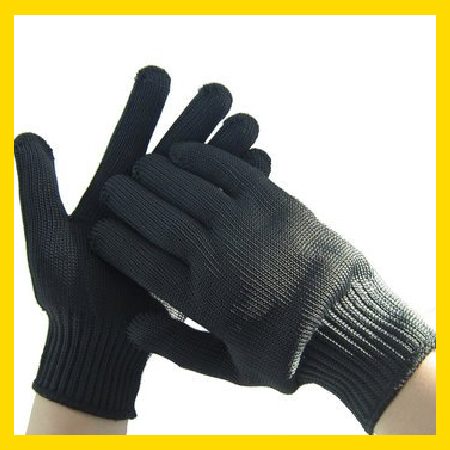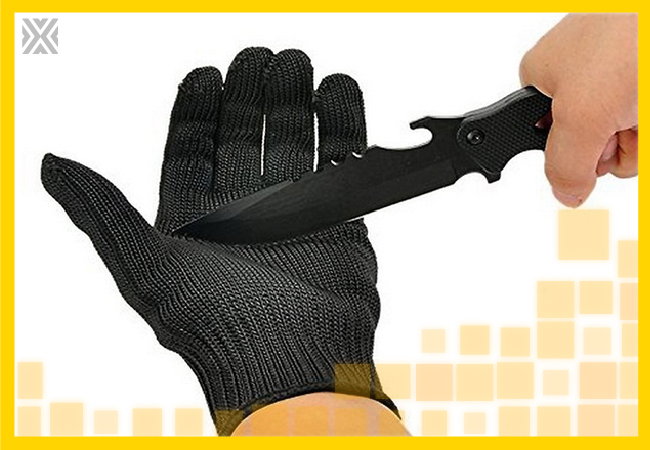Currency
November 08, 2018

Not long ago gloves were considered just another uncomfortable piece of PPE that one was obliged to wear. Leather was the material of choice for premium protection, while less expensive fabric offered basic hand coverage. Over time, string knit technology came along, providing improved fit and form, and with the introduction of DuPont™ Kevlar® (para-aramid) a revolution ensued that made cut protection a leading factor in hand safety.
Soon alternatives to Kevlar® began to appear. Glass-based fibers blended with cotton and polyester became a low-cost option in the cut protection glove category. Dyneema® HPPE (High Performance Poly Ethylene) fiber technology was also introduced as a new fiber that offered cut resistance along with cool comfort and without the skin irritation that is often associated with glass-based fiber. The advantages of fibers such as Kevlar® and Dyneema®, combined with more sophisticated knitting machine technology, further advanced glove fit, form and feel.
Other manufacturing technologies such as dip coating over screen-printing created a whole new category of gloves called coated seamless knits. They quickly became the hand protection technology of choice. For the first time, gloves not only protected against cuts and scrapes, but they also added real grip for better, safer and less fatigued handling of parts.
It seemed like the ultimate in hand protection technology had been achieved and nothing more could be done. But leaders in hand protection safety knew there was more to do. They saw a world where advanced hand and arm protection would become basic PPE for all workers. They did not see cut-resistant gloves as a specialty item for use only by workers who are at a high risk of cut injuries. They rhetorically asked themselves: if most workers are wearing gloves that don’t offer minimal cut protection, why are they wearing gloves?
At a time when leather made up over 50 percent of the market, and another estimated 30 percent was relegated to low-cost generic gloves, they saw an opportunity in being able to provide all workers with affordable cut-resistant gloves that are comfortable to wear and non-irritating to the skin.
The result was the development of engineered yarns. Glove manufacturers worked directly with fiber manufacturers and spinners to find innovative ways that were not just limited to blending, but to engineering yarns for better performance.
But what exactly does “engineered” mean? While blending fiber has been around for thousands of years, engineered yarns methodically blend by wrapping and combing fibers and special core fibers to enhance overall performance. Core materials used alone, or loosely blended, typically do not offer good next-of-skin feel, but when wrapped carefully using advanced techniques, they offer exceptional properties that improve both performance and overall comfort. Engineered yarns are important to the development and use of hand and arm protection products.
The advantages of engineered yarns are all about developing gloves and sleeves that meet the needs of various customers, while aiming to making cut protection ubiquitous to all. If gloves do not offer a measurable level of cut resistance protection, they are merely for style — and that is not PPE.

A closer look at glove advancements reveals that there are three main technology platforms.
The first is DuPont™ Kevlar®. The traditional yellow Kevlar®, while still perceptually synonymous to high-strength fiber, has been proven to have some drawbacks related to UV degradation and strength. Over the last few years, DuPont has significantly improved overall Kevlar performance by offering a line-up of engineered yarns to its dedicated licensees. These new engineered yarns, based on the Kevlar technology platform, allowed leading manufacturers to introduce thinner gloves at higher cut scores and with unprecedented comfort. On the ultra-high end of the performance spectrum, these new Kevlar® engineered yarns are able to provide A7 cut performance for workers in high-risk environments.
The second technology platform is based on HPPE (High Performance Poly Ethylene). DSM Dyneema® recently introduced an advancement of Dyneema® Diamond. This fiber features embedded micro-particles to enhance strength. Adding these micro-particles increases cut resistance by incorporating a “hardness factor” into the fiber. The result is a premium fiber that doubles the cut-resistance of the yarn at the same thickness or provides a stronger thinner yarn resulting in gloves with improved dexterity and comfort. Along the same lines of improving the strength of HPPE is the need for making it more affordable. Glove manufacturers have answered this call by developing proprietary engineered yarns which incorporate new reinforcement fibers or materials that result in high cut protection, comfort and affordability.
The third technology platform revolves around recently discovered materials proving to be excellent enhancers of engineered yarn properties. The result is high cut protection, enhanced abrasion resistance and lighter-weight cooler gloves and sleeves. New fibers made from indigenous rock or reinforced with nanostructured carbon-based material such as carbonX and graphene are proving to be promising performance enhancers.
Advanced knitting patterns can be used to enhance the fit, form and feel of a glove or sleeve. Products can be knitted to provide cooler and more comfortable next-of-skin properties on the inside and stronger, more abrasion resistance on the outside. Sleeves can be two-dimensionally knitted to exhibit self-fitting properties that adjust for varying arm sizes and movements. This greatly reduces the reliance on elastane fibers, elastic bands or clips.
Leaders in hand and arm protection invest in innovation and work within an established supply chain that links the fiber manufacturers, spinners, and factories to develop products that are based on technology platforms. No one fiber or yarn can serve all the needs of customers. That is why multiple solutions should be provided that are not just limited to glove liner materials, but also extend to include new glove coating technologies.
Soon alternatives to Kevlar® began to appear. Glass-based fibers blended with cotton and polyester became a low-cost option in the cut protection glove category. Dyneema® HPPE (High Performance Poly Ethylene) fiber technology was also introduced as a new fiber that offered cut resistance along with cool comfort and without the skin irritation that is often associated with glass-based fiber. The advantages of fibers such as Kevlar® and Dyneema®, combined with more sophisticated knitting machine technology, further advanced glove fit, form and feel.
Other manufacturing technologies such as dip coating over screen-printing created a whole new category of gloves called coated seamless knits. They quickly became the hand protection technology of choice. For the first time, gloves not only protected against cuts and scrapes, but they also added real grip for better, safer and less fatigued handling of parts.
Advanced protection
It seemed like the ultimate in hand protection technology had been achieved and nothing more could be done. But leaders in hand protection safety knew there was more to do. They saw a world where advanced hand and arm protection would become basic PPE for all workers. They did not see cut-resistant gloves as a specialty item for use only by workers who are at a high risk of cut injuries. They rhetorically asked themselves: if most workers are wearing gloves that don’t offer minimal cut protection, why are they wearing gloves?
At a time when leather made up over 50 percent of the market, and another estimated 30 percent was relegated to low-cost generic gloves, they saw an opportunity in being able to provide all workers with affordable cut-resistant gloves that are comfortable to wear and non-irritating to the skin.
The result was the development of engineered yarns. Glove manufacturers worked directly with fiber manufacturers and spinners to find innovative ways that were not just limited to blending, but to engineering yarns for better performance.
But what exactly does “engineered” mean? While blending fiber has been around for thousands of years, engineered yarns methodically blend by wrapping and combing fibers and special core fibers to enhance overall performance. Core materials used alone, or loosely blended, typically do not offer good next-of-skin feel, but when wrapped carefully using advanced techniques, they offer exceptional properties that improve both performance and overall comfort. Engineered yarns are important to the development and use of hand and arm protection products.
The advantages of engineered yarns are all about developing gloves and sleeves that meet the needs of various customers, while aiming to making cut protection ubiquitous to all. If gloves do not offer a measurable level of cut resistance protection, they are merely for style — and that is not PPE.

Three main technology platforms
A closer look at glove advancements reveals that there are three main technology platforms.
Knitting patterns
Advanced knitting patterns can be used to enhance the fit, form and feel of a glove or sleeve. Products can be knitted to provide cooler and more comfortable next-of-skin properties on the inside and stronger, more abrasion resistance on the outside. Sleeves can be two-dimensionally knitted to exhibit self-fitting properties that adjust for varying arm sizes and movements. This greatly reduces the reliance on elastane fibers, elastic bands or clips.
Leaders in hand and arm protection invest in innovation and work within an established supply chain that links the fiber manufacturers, spinners, and factories to develop products that are based on technology platforms. No one fiber or yarn can serve all the needs of customers. That is why multiple solutions should be provided that are not just limited to glove liner materials, but also extend to include new glove coating technologies.









